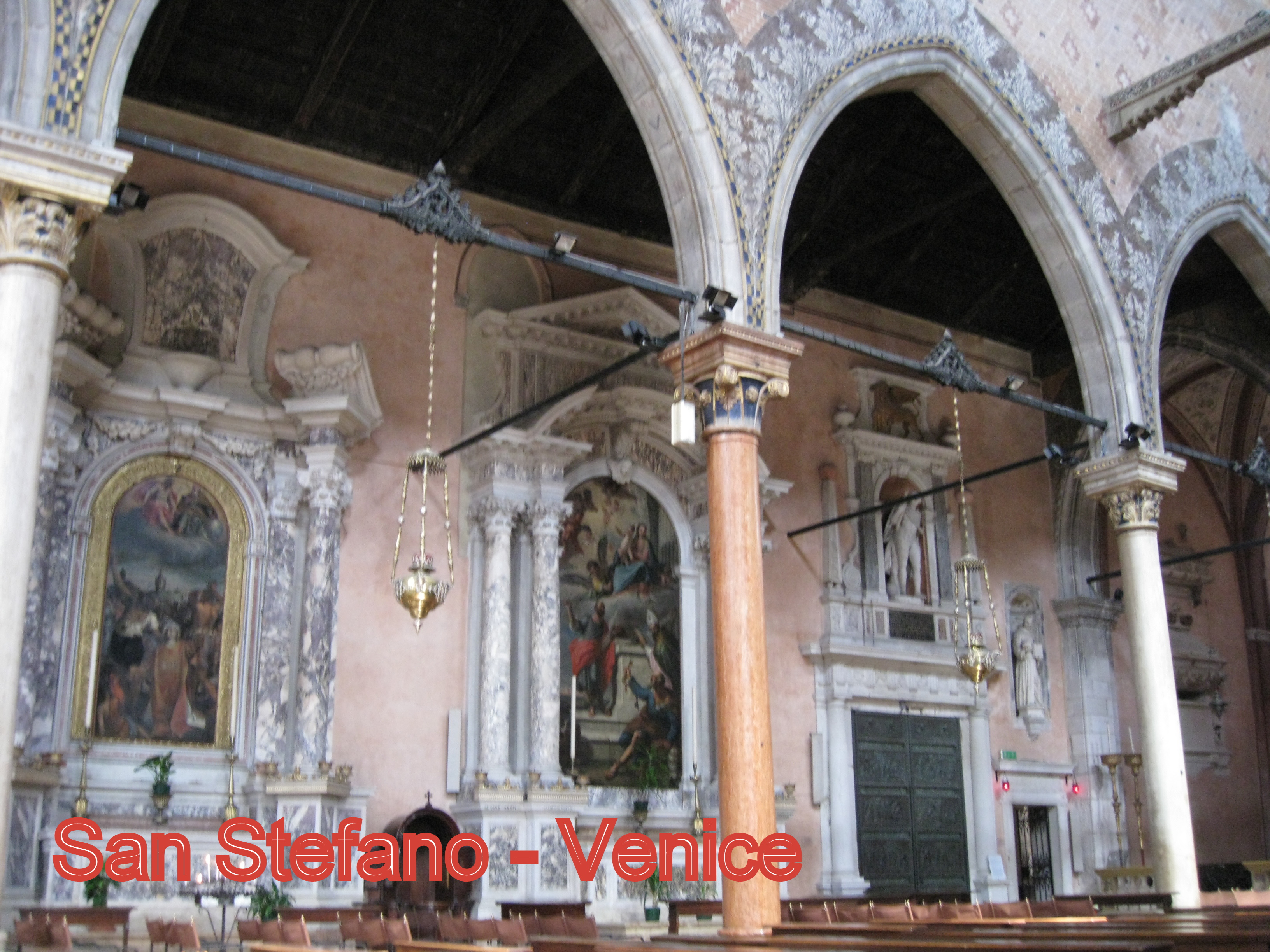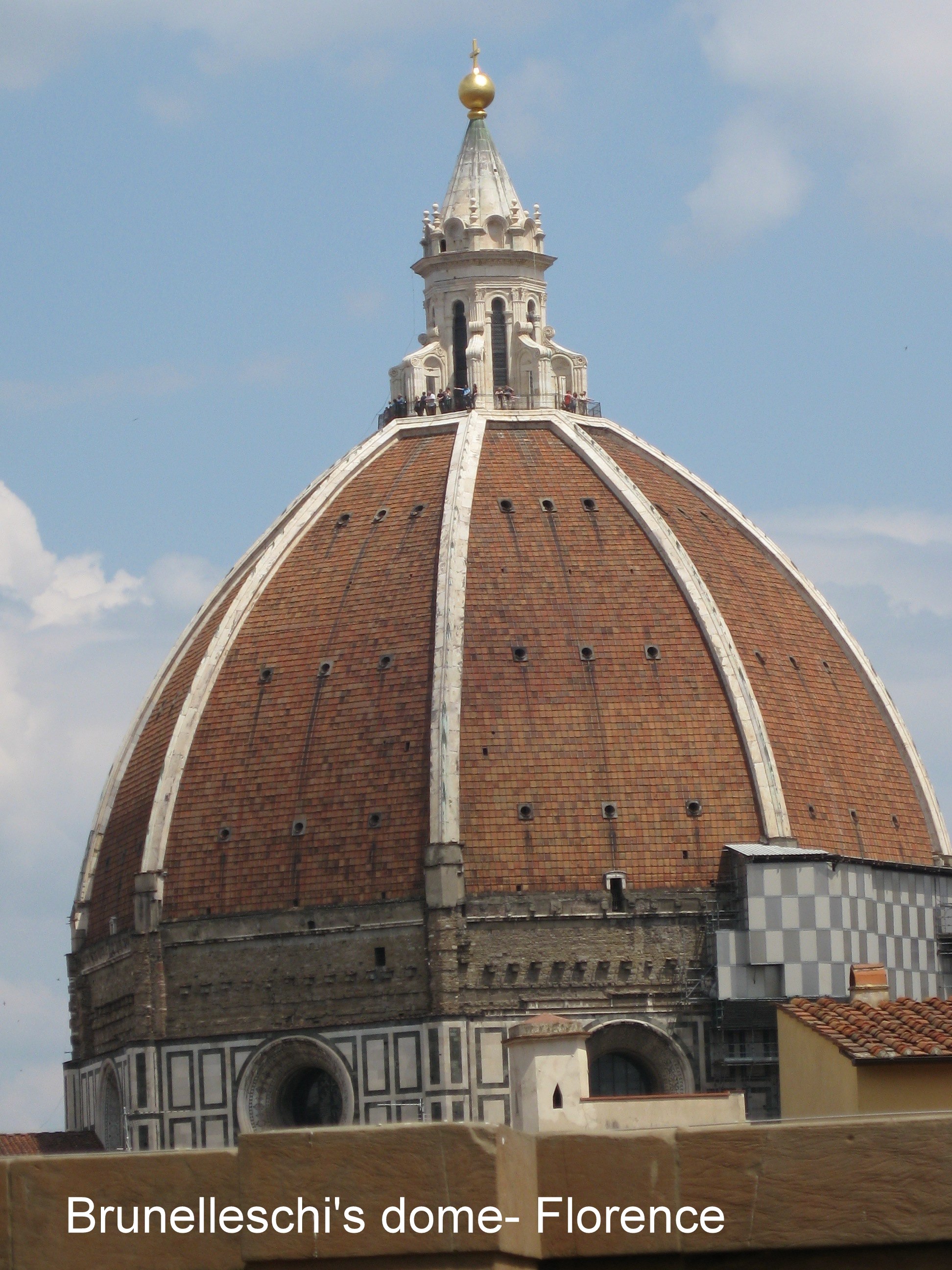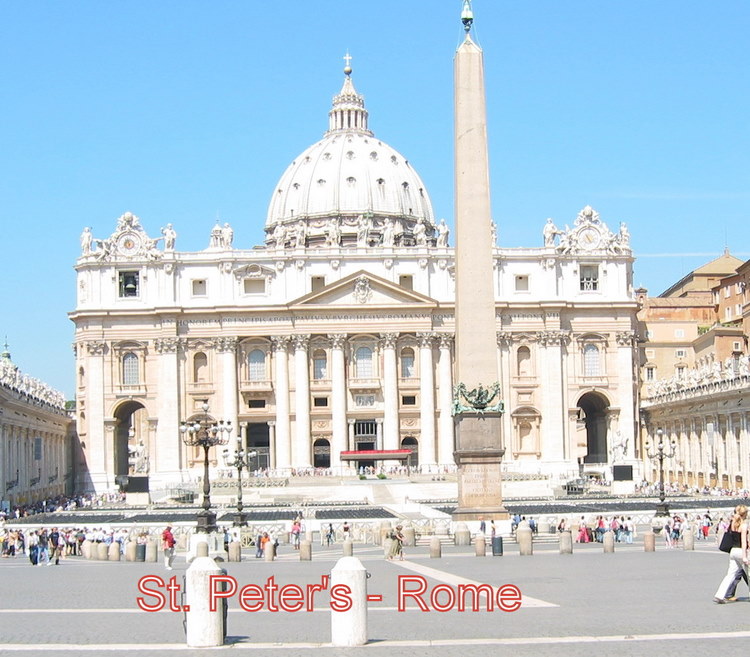CATHEDRAL QUEST
Our quest to experience the great cathedrals and churches of Europe
RENAISSANCE ARCHITECTURE
1300-1650
The Renaissance, which is the
time of the revival of classical world of Greece and Rome, began in Florence,
Italy. The dates are approximately
from 1300 to 1650. The Renaissance originated in the movement known as humanism
which was a revival of interest in classical literature and philosophy.
As it broadened socially and intellectually, it took in classical law,
history, art and architecture. Countless books have been written on the Italian
Renaissance by scholars who know far more about it than I do.
I would also highly recommend a 36 lecture course
Dr.
Kenneth Barlett on the Italian Renaissance produced by the Teaching Company.
We
have enjoyed many of the fruits of the Renaissance period, particularly the art
and architecture. My purpose for
Cathedral Quest is to write about our experiences with these Renaissance
treasures plus pointing out some of the features of each church that make them
unique.
Architecture plays a key role in
the Renaissance. The ten volumes of Vitruvius’
De Architectura treatise( a
translation by Morris Morgan ) that
describes the architecture of classical Greece and Rome had been discovered in
1414. Vitruvius’ writing triggered
an architectural revolution. From
this point onward, models drawn from classical antiquity determined
architectural design.
The Renaissance style places emphasis on symmetry, geometry, proportions and regularity of components as had been used in the architecture of ancient Greece and Rome, particularly Rome.
 Beginning
in the 1000’s, the Romanesque style of churches were built throughout Europe.
There were major problems with structure which lead to the beginning of
the Gothic style with its pointed arches, vaulted ceilings, flying buttresses,
great heights, and walls with magnificent stained glass windows.
While Gothic flourished in France, and soon moved to other countries, it
had little, if no, influence in Italy with the exception of Milan Cathedral.
Beginning
in the 1000’s, the Romanesque style of churches were built throughout Europe.
There were major problems with structure which lead to the beginning of
the Gothic style with its pointed arches, vaulted ceilings, flying buttresses,
great heights, and walls with magnificent stained glass windows.
While Gothic flourished in France, and soon moved to other countries, it
had little, if no, influence in Italy with the exception of Milan Cathedral.
The cathedrals and churches that
we visited in Italy were unlike churches of the Middle Ages. The Renaissance
goes further back than the Middle
Ages to the buildings styles and forms of the ancient Greek and Roman temples,
changing them to conform to the use
as a Christian church. In the
Renaissance cathedrals and churches, we do not find high vaulted ceilings,
flying buttress flanking the outside walls, walls of beautiful stained glass or
exquisite facades covered with hundreds of statues.
Most Renaissance church facades are rather plain in comparison to Gothic Cathedrals. I personally do not find the exterior of Renaissance church as “breath taking” as the Gothic. Maybe you can tell that I am partial to Gothic!
In
Florence, Venice and Padua, we encountered several churches where the façade
had never been completed. The west front was made of rough cut bricks.
A number of Renaissance churches did not have facades added until as late
as the 19th century. Santa Maria Novelle in Florence,
picture above, was completed in 1357, but its facade was not finished until
1470.
Most of the 24 churches that we
visited in Venice had the classical Greek and Roman style facade with a variety
of columns. I will point these out when
we visit Venice in 2007.
Upon entering the Renaissance
style church, our eyes were not lifted to a great height as in the Gothic
churches. Most Renaissance churches
have either a barrel vault or a flat ceiling.
Many flat ceilings are coffered,
that is the ceiling is covered with a series of decorated squares.
 Instead of stone walls hosting a
multitude of windows, in the Renaissance church, the walls are generally
smoothly plastered and painted a chalk white.
Stained glass windows are not often used, and if so used they are not
very large. Many of the interior
walls are divided into small niches for a small chapel or just an altar with
either a painting or a sculpture above it. Since the Renaissance was a
period of high art, the churches are filled with wonderful works of art by the great
Italian masters. I will mention
these by name as we explore each church in our quest.
The exciting part of seeing these paintings and sculptures, for us, was to have studied
these artists and their works of art in a 36 session lecture series on Renaissance
Art taught by William Kloss on a Teaching Company DVD.
Also very edifying were several courses on art history that we took at the
Smithsonian Resident Associates program taught by Dr. Karin Alexis and Dr. Judy Scott Feldman. We
made a list of where these works of art were located so we could see them in
person in the various churches and museums. Doing our
“homework” before traveling certainly made our quests more enjoyable.
Instead of stone walls hosting a
multitude of windows, in the Renaissance church, the walls are generally
smoothly plastered and painted a chalk white.
Stained glass windows are not often used, and if so used they are not
very large. Many of the interior
walls are divided into small niches for a small chapel or just an altar with
either a painting or a sculpture above it. Since the Renaissance was a
period of high art, the churches are filled with wonderful works of art by the great
Italian masters. I will mention
these by name as we explore each church in our quest.
The exciting part of seeing these paintings and sculptures, for us, was to have studied
these artists and their works of art in a 36 session lecture series on Renaissance
Art taught by William Kloss on a Teaching Company DVD.
Also very edifying were several courses on art history that we took at the
Smithsonian Resident Associates program taught by Dr. Karin Alexis and Dr. Judy Scott Feldman. We
made a list of where these works of art were located so we could see them in
person in the various churches and museums. Doing our
“homework” before traveling certainly made our quests more enjoyable.

One aspect of Renaissance
architecture that we did not find in Gothic architecture was the use of domes.
One of the earliest examples of the use of the dome is the great dome of
the Pantheon in Rome built in the early second century.
Most scholars give credit to Filippo Brunelleschi as one of
its innovators in the Renaissance period. The
study of how he built the dome on the cathedral in Florence is fascinating. The
story of Brunelleschi life, itself, is fascinating.
I would recommend as excellent reading, Ross King’s
book -Brunelleschi’s Dome. Since our first visit to Florence was part of a tour, and we were in and
out of the Florence Duomo (cathedral) quickly, with little time to explore it. I
will give a detailed description of Brunelleschi’s Dome on our second trip to
Italy in 2007. We were in Florence for a week and spent a lot of time in the
Duomo.
Another example of an outstanding
dome is Bramante’s plan for the building of the dome for the newly constructed
St. Peter’s Basilica, a dome continued by Sangallo, Michelangelo, and finished
by Giacomo della Porta. I will write
more about St. Peter’s and its dome in Italy 2004.
Renaissance Art and Architect
cover three periods:
·
Renaissance (ca.
1400-1500) also known as the Quattrocento or Early Renaissance. Brunelleschi,
Michelozzo and Alberti are associated with this period.
·
High Renaissance (ca.
1500-1525). In this period we find
Bramante, Sangallo and Raphael.
·
Mannerism (ca.
1520-1600). Peruzzi, Giulio Romano, Michelangelo, Giacomo della Porta, and
Andrea Palladio are associated with Mannerism. Mannerism led to the Baroque
style.
Renaissance architecture was not
limited to churches. One does not
see many, if any, Gothic style public buildings.
The Renaissance style was used for many public buildings or city palaces,
villas and gardens andquickly spreading to other countries. Both
Florence and Venice are filled with all kinds of Renaissance and Baroque
buildings which we will illustrate in Italy 2008.
Below is a list of the Renaissance churches that we have visited. As I write about these churches on the various travel pages, I will provide a link from the church listed below to a full description of that particular church.
|
|
|
RENAISSANCE
1300-1650
|
|
|
Present
|
Finsh
|
City
|
Country
|
Church Name
|
Started |
Date
|
|
|
|
1250 |
1443 |
Venice |
Italy |
Santa Maria Gloriosa |
1279 |
1357 |
Florence |
Italy |
Santa Maria Novella |
1300
|
|
Soisson
|
France
|
St. Jean
|
1300
|
|
Florence
|
Italy
|
Santa Trinita
|
1301
|
|
Padua
|
Italy
|
Scrovegni/Arena
Chapel
|
1307
|
|
Padua
|
Italy
|
Basilica di
Sant Antonia
|
1313
|
1504
|
Venice
|
Italy
|
San Giovanni
Crisostomo
|
1337
|
|
Florence
|
Italy
|
Orsanmichele
|
1351
|
|
Venice
|
Italy
|
La Chesa di
San Canciano
|
1357
|
1420
|
Florence
|
Italy
|
Santa Maria
del Fiore- Duomo
|
1386
|
1809
|
Milan
|
Italy
|
Milan
Cathedral (Gothic style)
|
1396
|
|
Como
|
Italy
|
Duomo
|
1400
|
|
Rouen
|
France
|
St.Maclou
|
1400
|
|
Trier
|
Germany
|
St. Ganglof
|
1400
|
|
Padua
|
Italy
|
San Nicolo
|
1400
|
|
Venice
|
Italy
|
San Stefano
|
1414
|
|
Trier
|
Germany
|
St. Paulin
|
1421
|
|
Florence
|
Italy
|
San Lorenzo
|
1435
|
|
Florence
|
Italy
|
Santo Spirito
|
1481
|
|
Venice
|
Italy
|
Santa Maria
dei Miracoli
|
1489
|
|
Padua
|
Italy
|
Basilica of S.
Giustina
|
1489
|
|
Venice
|
Italy
|
San Rocco
|
7th century |
1492 |
Venice |
Italy |
Santa Maria Formosa |


